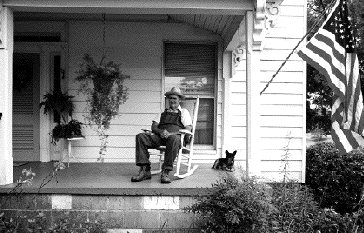Social Security checks offer independence for the elderly, making it
possible for millions of Americans to live on their own, without
depending on the devotion of their children or the kindness of friends
and neighbors.
Most elderly people have their own homes -- the ownership rate is 77% for
persons aged 65 or older. And their houses are in good shape: only 3%
had severe problems such as plumbing defects, the Census Bureau said
in a special report on "65-Plus in the United States."
They have enjoyed an equity build-up in real estate. The median
purchase price was $19,259, and the median value (in 1991) was
$70,418, the Census Bureau reported.
"Aging in place" is the phrase to describe most elderly Americans.
"Most older people stay put," the Census report noted. Only 3% of all
elderly in 1993 moved far enough to change their county of residence.
And only 1% moved to another state.

But those who do move can bring a surge of buying power and prosperity
with them. The Social Security check, combined with pension money, is
the economic fuel for those who move.
Florida was a magnet in the past three decades for the affluent, while
New York was a big loser of the post-65 population.
"Substantial amounts of retirement income may be transferred," the
Census Bureau reported. Florida won a net gain of $6.5 billion in 1989
from the people 60 and over who moved into the state. New York lost a
net $3.3 billion from people who left, with much of that money ($1.9
billion) going to Florida.
The elderly, for the most part, enjoy robust health through their 60s.
Only after age 70 do health problems begin to multiply, with the
resulting toll on independence. Many women become widows in their 70s,
but still manage to live independently if they are healthy.
Only 1.4% of persons between 65 and 74 live in nursing homes. But the
numbers begin rising sharply thereafter: 6% of the elderly between 75
and 84 are living in nursing homes. After age 85, the proportion in
nursing homes leaps to 24%.
The fastest growing segment of the elderly are those over 85,
designated the "oldest old." Typically, they are women who have
outlived their savings. Pensions, rarely adjusted for inflation, have
been eroded by time, and the Social Security check is their financial
rock.
Alzheimer's disease takes its disastrous toll -- about 40% of those over
age 85 fall victim. The tally of Alzheimer's disease victims, four
million today, could swell to 12 million when all the members of the
huge baby boom generation reach advanced old age. The fiscal strain on
government programs - Social Security, Medicare and Medicaid (which pays
nursing home bills for the indigent) - will be great.








